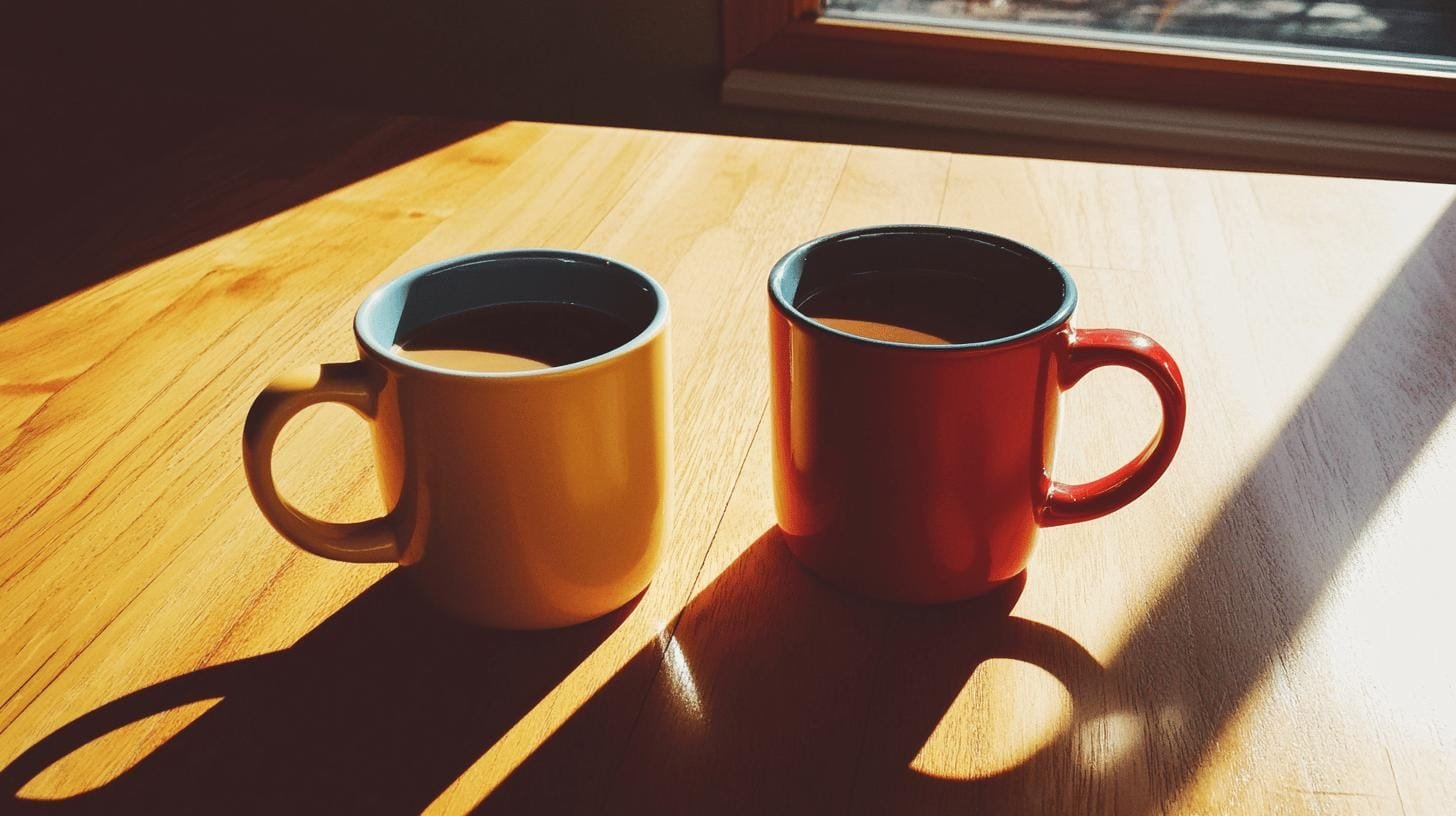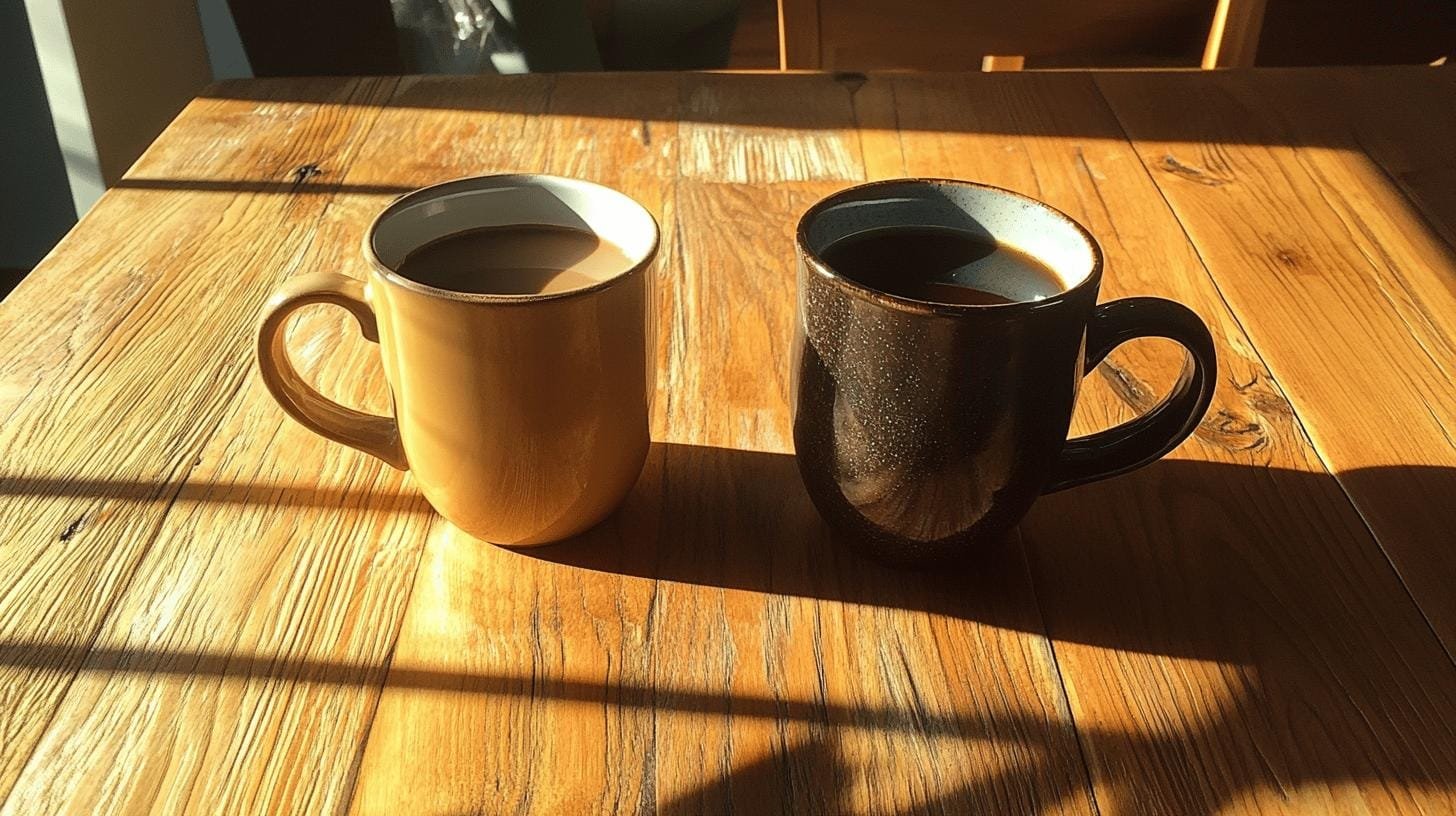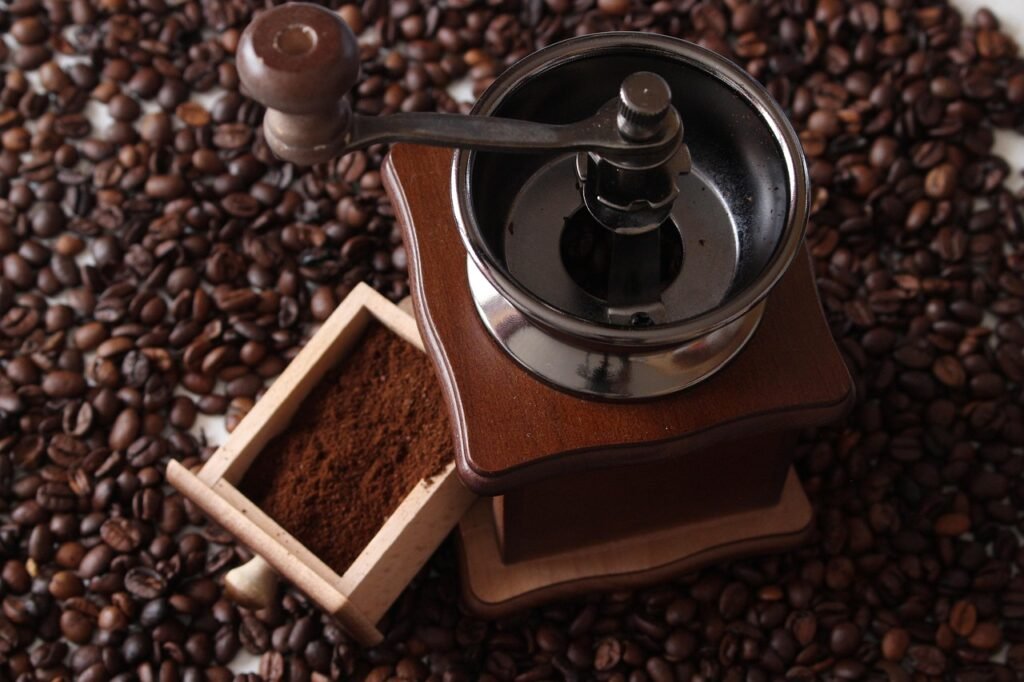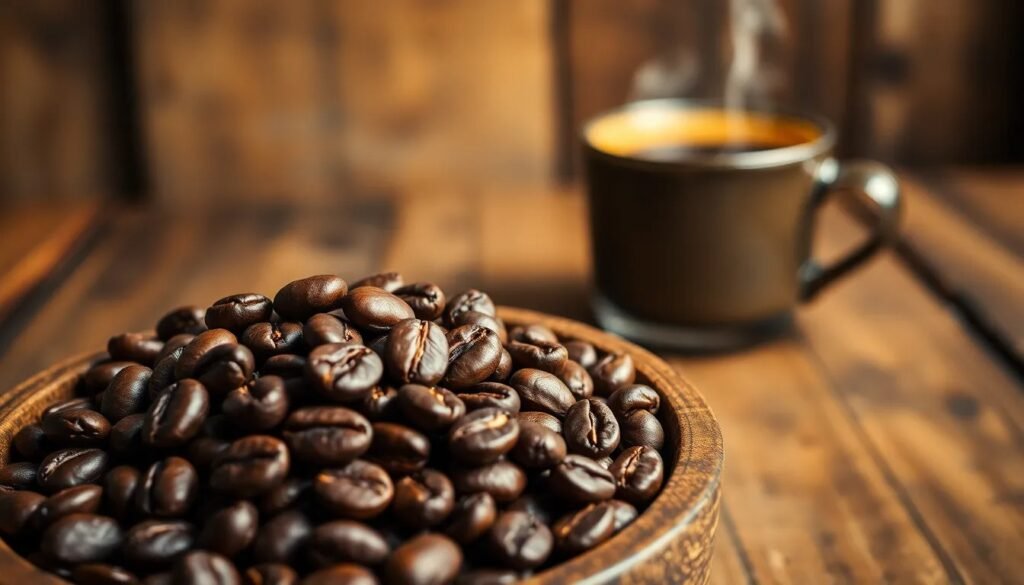Is the bright and lively citrus flavor of blonde coffee your personal beacon, or do you find solace in the rich, robust depths of dark roast coffee? Coffee enthusiasts often face this dilemma as they explore the vibrant coffee roast spectrum. Understanding the roast coffee flavor profile differences between blonde roast coffee and dark roast coffee influences not just your taste buds but your entire coffee experience. This article delves into how each roast’s unique attributes, from acidity to body, guide you toward finding the perfect coffee roast balance.
Blonde Roast Coffee vs. Dark Roast: Flavor Profile Differences in Coffee Roasts
Blonde coffee roasts and dark roast beans feature distinct coffee roast profiles that appeal to different preferences. Blonde roasts, often referred to as light roast coffee, are celebrated for their bright, citrusy flavors and high acidity. These characteristics highlight the natural qualities of the coffee beans used. In contrast, dark roast coffee is known for its deep, chocolatey notes and full-bodied richness, achieved through longer roasting times that reduce acidity and enhance smoother, more aromatic coffee.
Flavor Profiles Comparison
| Roast Type |
Flavor Profile |
Acidity |
Body |
| Blonde |
Citrusy, Bright |
High |
Light |
| Dark |
Chocolatey, Rich |
Low |
Full |
Blonde roast to our rich dark roast, the contrast is about more than color—it’s a journey through taste. Blonde coffee roasts are ideal for those who enjoy a vibrant, fruity coffee beverage, while dark roast coffee caters to fans of bold, comforting brews. Understanding these differences helps coffee drinkers find the roast that best suits their palate.
Coffee tasting notes reveal these coffee roast profiles further. Blonde coffee’s bright notes make it perfect for a morning pick-me-up, while the deeper character of dark roast coffee suits those craving a more indulgent experience. Recognizing these flavor differences supports better coffee choices.
Caffeine Levels in Blonde Roast Coffee vs. Dark Roast Coffee

Caffeine Content in Blonde Coffee vs Dark Coffee
Despite the popular myth, blonde roast coffee doesn’t inherently contain more caffeine than dark roast coffee. The misconception arises because blonde coffee beans are denser due to the shorter roasting process. However, caffeine content is primarily influenced by the bean type and brewing method rather than the roast level.
Key caffeine factors include:
- Roast Level: Light roasts, like blonde coffee, are denser but not more caffeinated.
- Brewing Method: Techniques like espresso concentrate caffeine.
- Bean Type: Robusta beans have more caffeine than Arabica.
- Brewing Method: Methods like espresso concentrate caffeine.
- Measurement: Weight measurement can alter caffeine levels.
- Grind Size: Fine grinds extract more caffeine during brewing.
Many think dark roasts have more caffeine due to their robust flavor, but this isn’t true. Though dark roasting can slightly reduce caffeine, the difference is minor. Factors like bean type and brewing methods more significantly impact caffeine content. Understanding these helps bust myths, leading to better coffee choices based on preference.
Is Blonde Espresso Stronger Than Dark?
Blonde espresso is not inherently stronger in taste, though it may contain slightly higher caffeine than a traditional espresso roast due to the shorter roasting time. On average, blonde espresso has around 85 mg of caffeine, compared to 64 mg for a shot of dark roast espresso.
Blonde roast coffee beans used in espresso yield a smooth, mellow cup with floral and citrus notes, while dark roast coffee delivers richer, chocolatey undertones. The strength of coffee depends not only on caffeine level but also on the flavor boldness and roast depth.
The Roasting Process: From Blonde Coffee Roasts to Dark Roast Coffee
To understand coffee roasting, one must look at how roast levels transform green coffee beans. Blonde coffee roasts undergo a shorter roasting process just past the first crack, preserving acidity and natural flavors. Meanwhile, dark roast coffee reaches higher temperatures—usually between 437°F and 446°F—developing caramelized, bold notes.
-
Blonde roast coffee: Short roasting retains bright, fruity flavors.
-
Dark roast: Caramelization from extended roast time enhances depth.
-
Color Changes: From light tan (blonde) to deep brown (dark roast).
-
Flavor Profile: Blonde emphasizes citrus; dark evokes nutty, chocolate flavors.
Coffee roasters carefully manage time, temperature, and airflow to create various coffee roast profiles, from blonde roast to French or Italian dark roast. This process also affects aroma: blonde coffee emits fruity aromas, while dark roast features earthy, smoky scents.
Health Benefits of Blonde Coffee vs Dark Coffee

Both blonde roast coffee and dark roast coffee offer health perks—thanks in part to antioxidants and caffeine level. These coffee roasts may support heart health, reduce inflammation, and improve focus and energy.
-
Blonde coffee roasts may retain more antioxidants due to shorter roast time.
-
Dark roast coffee is often easier on the stomach due to lower acidity.
-
Both enhance focus and energy without drastically different caffeine levels.
Blonde’s higher acidity might not suit everyone, especially those with digestive sensitivity. Conversely, dark roast coffee’s lower acidity is more tolerable, making it ideal for regular consumption while still offering health benefits.
Brewing Blonde Roast Coffee, Medium Roast Coffee, and Dark Roast Coffee
Brewing blonde coffee needs methods that highlight its light, citrusy flavors with high acidity. Pour-over, espresso, and cold brew techniques are ideal for extracting blonde roasts’ subtle flavors. Water temperature is key; hotter water (96-98°C) is recommended for extracting brightness.
Communicating which methods suit which roast can improve the experience:
- Blonde Roast: Use water at 96-98°C, medium-fine grind.
- Dark Roast: Brew cooler at 85-90°C, coarser grind.
- Blonde Methods: Best for pour-over, espresso, cold brew.
- Dark Methods: Ideal with French press, espresso, Moka pots.
Choosing the right brewing method elevates flavors in blonde and dark coffees. Lower temperatures, between 85-90°C, keep dark coffee smooth, avoiding bitterness. By selecting appropriate methods, enthusiasts can relish the distinct traits of each roast type, enhancing their coffee experience.
Health Benefits of Light Roast Coffee vs. Dark Roast Coffee
Blonde roast coffee and dark roast coffee both offer health benefits, from boosting energy to delivering antioxidants. As a lighter roast, blonde coffee roasts may retain higher antioxidant levels, while dark roast coffee, with its lower acidity, is gentler on the stomach.
Health Benefits by Roast Type:
- Blonde Coffee Roasts: High in antioxidants, offering potential cell protection.
- Medium Roast Coffee: Combines antioxidant content with smooth, balanced flavors.
- Dark Roast Coffee: Easier on digestion due to lower acidity.
Whether you choose a good blonde roast or a bold dark roast, both options support a healthy coffee-drinking lifestyle.
FAQs on Blonde Roast vs. Dark Roast Coffee
What does blonde coffee mean?
Blonde coffee refers to a light roast that undergoes a shorter roasting period. This results in a lighter color and unique taste characterized by increased acidity and bright flavor notes.
Is blonde coffee stronger than dark?
Blonde coffee typically has more caffeine than dark roasts due to the denser structure of lightly roasted beans, though the difference in caffeine content is minimal.
What are the flavor differences between blonde and dark coffee?
Blonde coffee has a citrusy, bright taste with higher acidity, while dark coffee offers rich, deep flavors like chocolate and nuts, with a smoother feel due to reduced acidity.
What are the benefits of blonde coffee?
Blonde coffee may offer more antioxidants than darker roasts due to its shorter roasting time. It also provides an energy boost and highlights the bean’s original, complex character.
What is the significance of the first crack in coffee roasting?
The first crack is a key stage in the coffee roasting process when the coffee beans make a popping sound as they expand. It marks the transition from green coffee beans to a lighter roast, like a blonde roast, where the natural flavors of the beans are preserved.
How does the roaster control the roast spectrum?
A skilled roaster manages the roast spectrum by carefully adjusting the time, temperature, and airflow during the roasting process. This allows them to produce various types of coffee, from light roast (like blonde roast coffee beans) to dark roast (like French roast or Italian roast).
What is a blonde espresso, and how does it differ from a traditional espresso roast?
Blonde espresso is made using blonde roast coffee beans, which are roasted for a shorter time to maintain bright, citrusy flavors. It has a lighter body and higher acidity compared to traditional espresso roast, which is darker and has a fuller, richer flavor.
What does the term “blonde roast” mean?
The term “blonde roast” refers to a light roast coffee where the beans are roasted for a shorter period, just past the first crack. This roast level highlights the coffee’s natural, fruity, or citrusy flavors while preserving higher acidity.
How does the darkness of the roast affect caffeine content?
The darker the roast, the less dense the coffee beans become, but the caffeine content remains relatively consistent. Contrary to popular belief, lighter roasts, like blonde roast coffee, do not necessarily contain higher caffeine than dark roasts when measured by weight.
What are the three main coffee roast profiles?
Coffee is generally classified by three roast profiles: light roast (e.g., blonde roast), medium roast, and dark roast. Each profile offers distinct flavor characteristics, acidity levels, and body, allowing coffee drinkers to find the right match for their taste preferences.
How does the roasting process affect green coffee beans?
When green coffee beans are roasted, they undergo chemical transformations that develop their flavor, aroma, and body. Light roasts like blonde coffee highlight the beans’ natural characteristics, while darker roasts like Italian roast focus on bold, caramelized flavors.
Do light roasts contain more caffeine than dark roasts?
By volume, light roasts may contain slightly higher caffeine because they are denser than dark roasts. However, when measured by weight, the caffeine difference is negligible. Both light and dark roasts can provide a similar caffeine boost depending on brewing methods.
What is the lightest coffee roast, and who is it best for?
The lightest coffee roast is typically a blonde roast. It is best suited for coffee enthusiasts who enjoy bright, fruity flavors with high acidity and a lighter body, often preferred in pour-over or blonde espresso brewing.
Why are coffee beans roasted for a shorter period for lighter roasts?
Coffee beans are roasted for a shorter period to preserve their natural flavors, acidity, and lighter body. This process highlights the bean’s origin characteristics, making lighter roasts, like blonde roast coffee beans, ideal for showcasing delicate flavor notes.
How do coffee shops use roast profiles to cater to customers?
Coffee shops often offer a range of roast profiles, from light roasts to dark roasts, to appeal to diverse tastes. They may highlight specific blends like Pike Place for a balanced cup or blonde espresso for a brighter, lighter option.
What is the role of an espresso machine in achieving the right coffee flavor?
An espresso machine uses high pressure to extract concentrated flavors from coffee beans, making it ideal for medium and dark roasts like espresso roast. For blonde espresso, it can emphasize the citrusy, bright notes of a light roast.
What are the benefits of finding the right roast spectrum for your taste?
Exploring the roast spectrum allows coffee enthusiasts to discover their preferred type of coffee. Whether it’s the fruity notes of blonde roast, the balance of medium roast, or the bold richness of French roast, finding the right roast enhances the overall coffee experience.













